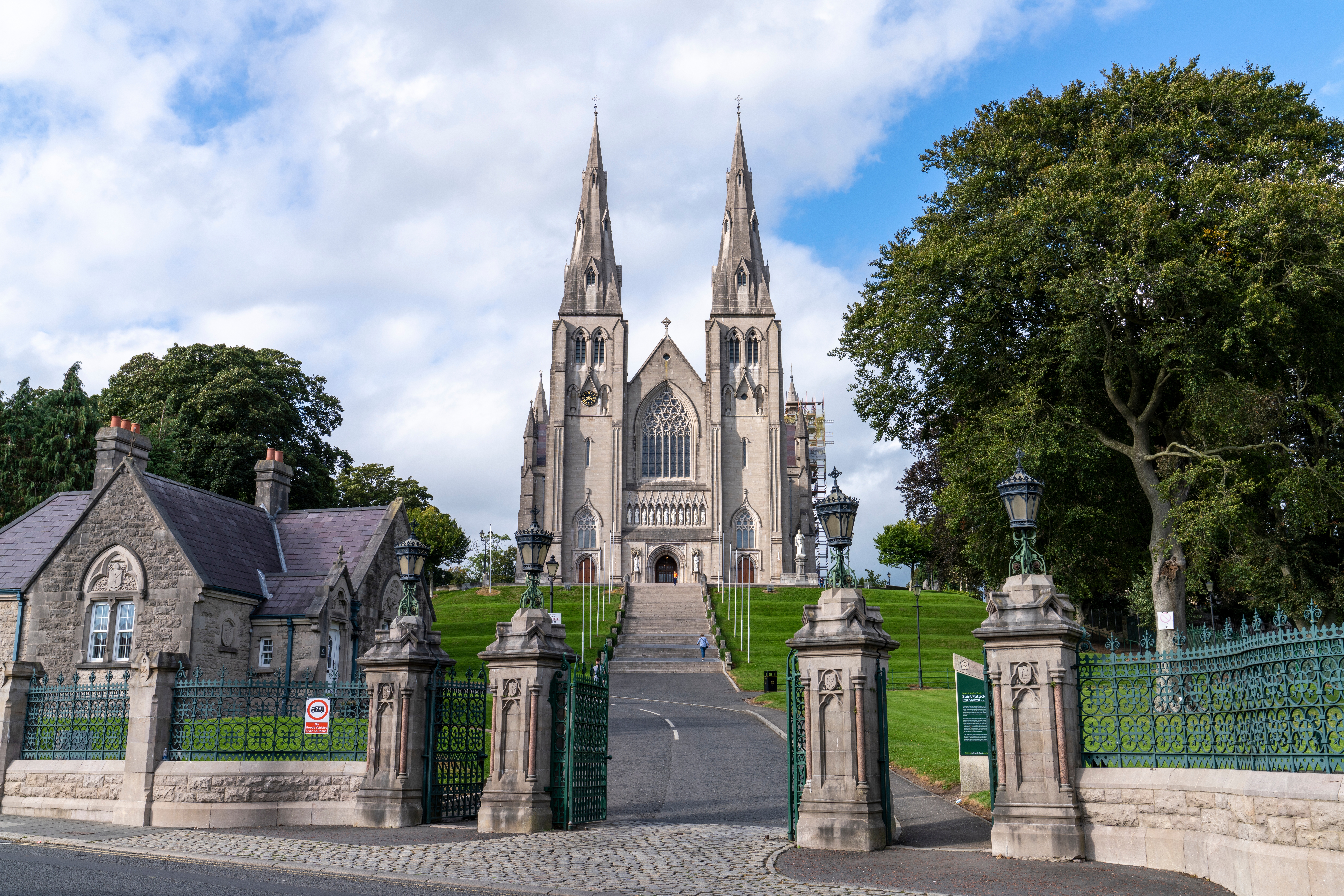Armagh, County, is the smallest of the six historic counties of Northern Ireland. It extends from the shore of Lough Neagh (Lake Neagh) in the north to the border with the Republic of Ireland in the south and west. The county ceased to be an administrative area when local government was reorganized in 1973. But local people continue to recognize the county as a distinct region and still refer to it as a county.

When local government was reorganized in 1973, much of the county became the district of Armagh. Other parts of it were included in the districts of Craigavon, Dungannon (later renamed Dungannon and South Tyrone), and Newry and Mourne. In 2015, local government districts were reorganized again. Today, the county area is covered by the Armagh City, Banbridge, and Craigavon borough, and the western part of the Newry, Mourne, and Down district.
County Armagh was an important and heavily populated region from early times, and the region is rich in historical monuments. The great circular earthwork at Navan Fort, about 2 miles (3.2 kilometers) from the city of Armagh, has been identified as Emhain Macha, the palace-capital of the pre-Christian kings of Ulster. The frontier earthworks, known as the Black Pig’s Dyke and the Dorsey, also date from this period. In early Christian times, Ard Macha (now the city of Armagh) replaced Emhain Macha as the main political center. Saint Patrick made it his headquarters in A.D. 444. It has since been regarded as the primatial see (archbishop’s diocese) of both the Church of Ireland and the Irish Catholic Church. Armagh was included in King James I’s Plantation of Ulster in 1609. It attracted many English settlers, whose influence contrasts with the Scottish character of much of the rest of Ulster. See Northern Ireland (Protestant settlement).
During the 1700’s, the archbishops of Armagh contributed much to the prosperity and importance of the county, especially to the dignified classical architecture of the city of Armagh. Archbishop Richard Robinson donated a library in 1765 and an observatory, which is the second oldest in the Commonwealth of Nations. A modern planetarium was opened in 1968. The Protestant cathedral, parts of which date from the 1100’s, stands on the hill that is the site of Saint Patrick’s church.
Across the city from the Protestant cathedral, on a neighboring height, is the Roman Catholic cathedral, an imposing building with twin spires. Built in the 1800’s, it commands picturesque views of the surrounding area. Armagh city has some fine Georgian architecture, particularly along its well-designed Mall, which was built in the 1700’s.
In 1920, when Ireland was partitioned, the border was drawn along the county lines. County Armagh became part of Northern Ireland. The southern part of the county, which was predominantly Roman Catholic and nationalist, thus became part of Northern Ireland, which was primarily Protestant and unionist. Catholic and Protestant communities in Armagh and other parts of Northern Ireland clashed over political, social, and economic matters. The southern part of County Armagh was the scene of terrorist attacks from 1969 until the mid-1990’s. See Northern Ireland (The Troubles).
